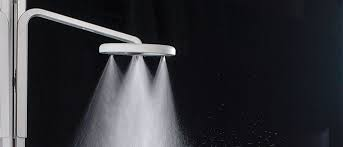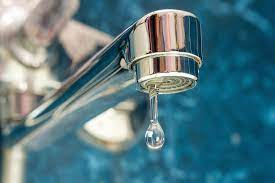Now Reading: How Low-Flow Fixtures Can Transform Your Home 2025
-
01
How Low-Flow Fixtures Can Transform Your Home 2025
How Low-Flow Fixtures Can Transform Your Home 2025

Table of Contents
In today’s world, saving water is not just a smart decision—it’s a necessity. As climate change continues to impact global water supplies, households are being encouraged to adopt sustainable habits. One of the easiest and most cost-effective ways to reduce water use at home is to install low-flow fixtures. Whether you’re a homeowner or a renter, switching to water-saving taps, showerheads, and toilets can make a big difference in your utility bills and your environmental impact.
What Are Low-Flow Fixtures?

Low-flow fixtures are plumbing devices designed to use less water than standard models. These include faucets, showerheads, and toilets that restrict water flow without reducing performance. The goal is to maintain the same level of cleanliness and comfort while using less water.
For example, traditional showerheads use around 2.5 gallons of water per minute. Low-flow versions can reduce this to as little as 1.5 gallons per minute, saving up to 40% more water. Faucets and toilets also come in low-flow models, with dual-flush options or aerators that mix air with water to lower usage without affecting pressure.
Why Install Low-Flow Fixtures?
1. Lower Your Water Bills
This is the most immediate benefit. When you use less water, you pay for less water. Installing low-flow showerheads alone can save an average household about 2,700 gallons of water per year. That can translate to hundreds of dollars saved annually, especially when combined with other low-flow fixtures.
2. Reduce Energy Consumption
Using less hot water also means using less energy to heat that water. This leads to lower energy bills and less strain on your home’s heating system. Water heating is one of the largest energy costs in most homes, so reducing hot water use makes a big difference.
3. Help the Environment
Every gallon of water saved helps ease the burden on freshwater sources and reduces the energy used in water treatment plants. With droughts and water shortages becoming more common in many parts of the world, installing low-flow fixtures is a practical step toward conservation.
4. Increase Home Value
Homebuyers today are more eco-conscious than ever. Installing water-saving features can make your home more attractive in the real estate market. Many buyers actively look for green certifications or energy-efficient features when choosing a home.
How to Choose the Right Low-Flow Fixtures
Showerheads
Look for models with the WaterSense label—a certification from the U.S. Environmental Protection Agency (EPA) that ensures efficiency and performance. These showerheads use no more than 2.0 gallons per minute and often have settings that allow you to adjust pressure and spray style.
Faucets
Aerators can be added to existing faucets to reduce flow. Or, choose WaterSense-certified faucets that use 30% less water than standard ones without compromising performance.
Toilets
Older toilets can use up to 6 gallons per flush. Modern low-flow models use 1.28 gallons or less. Dual-flush toilets offer two options: a low-volume flush for liquids and a full-volume flush for solids. This flexibility saves even more water over time.
Installation Tips
- DIY or Professional Help: Installing most low-flow fixtures is simple and can be done without professional plumbing help. Showerheads and aerators, for example, often screw on easily. However, replacing a toilet may require a licensed plumber.
- Check Local Rebates: Many city and state governments offer rebates or tax incentives for installing water-saving devices. Check with your local water utility for available programs.
- Maintain Regularly: Low-flow fixtures require some maintenance to stay effective. Clean aerators and showerheads regularly to avoid mineral buildup that can reduce flow and pressure.
Real-Life Impact: A Simple Change That Adds Up
The numbers don’t lie. According to the EPA, if every American home replaced just one showerhead with a WaterSense model, it would save over 260 billion gallons of water and $2.9 billion in water bills annually. That’s a significant impact for such a small change.
One family in California recently switched to low-flow fixtures during a home renovation. Within the first month, they saw a 25% reduction in their water bill. Over the course of a year, the savings paid for the cost of the new fixtures—and then some.
Common Myths About Low-Flow Fixtures

Myth 1: They Reduce Water Pressure
Today’s low-flow models are designed with pressure-compensating technology, meaning they maintain strong water pressure while using less water. Most users can’t tell the difference.
Myth 2: They’re Expensive
Many basic low-flow showerheads cost between $10 and $30. Considering the monthly savings, the return on investment is quick—often in just a few months.
Myth 3: They’re Hard to Install
In most cases, installation is as easy as unscrewing the old fixture and replacing it with the new one. Basic tools and a few minutes are usually all it takes.
Final Thoughts
Installing low-flow fixtures is a small step that brings big benefits. From cutting down your bills to conserving a precious resource, these upgrades make sense for both your wallet and the world. Whether you’re building a new home or updating your current one, now is the time to make water-saving changes.
As water conservation becomes more critical in the years ahead, low-flow fixtures will likely become the standard in every household. Get ahead of the curve and start saving today.
Read More:- Deyaar’s Latest Announcement Shakes Up the UAE Property Market






















